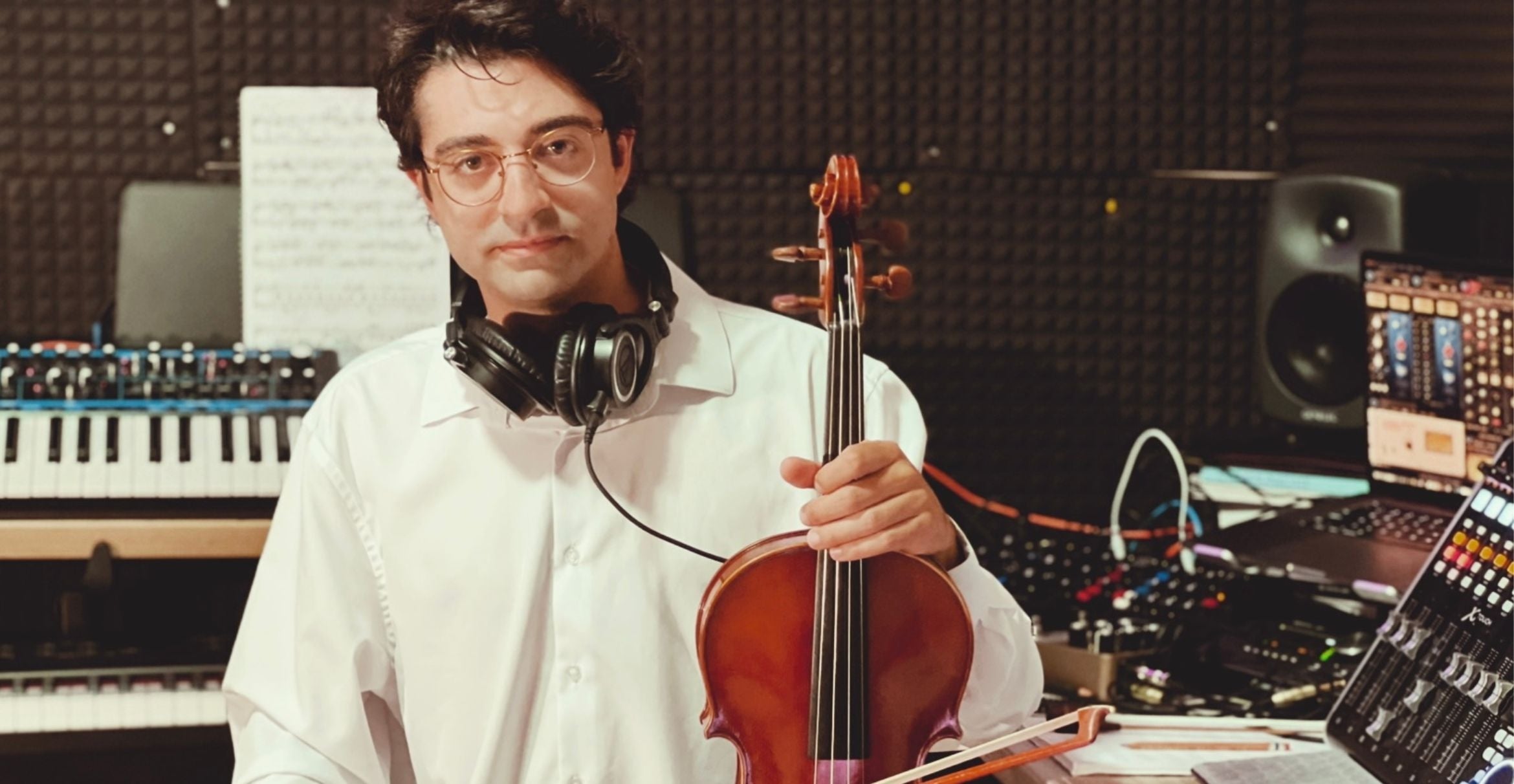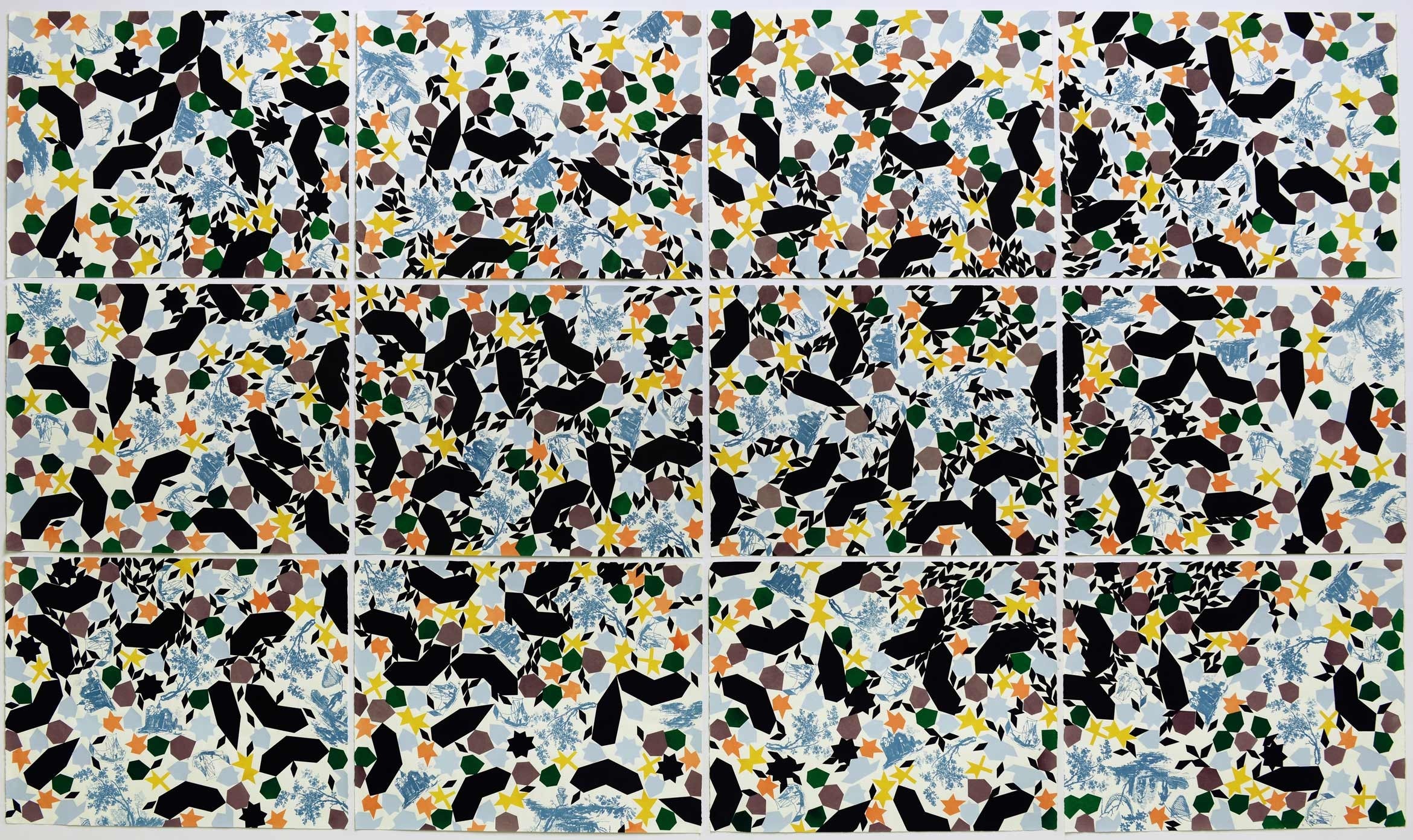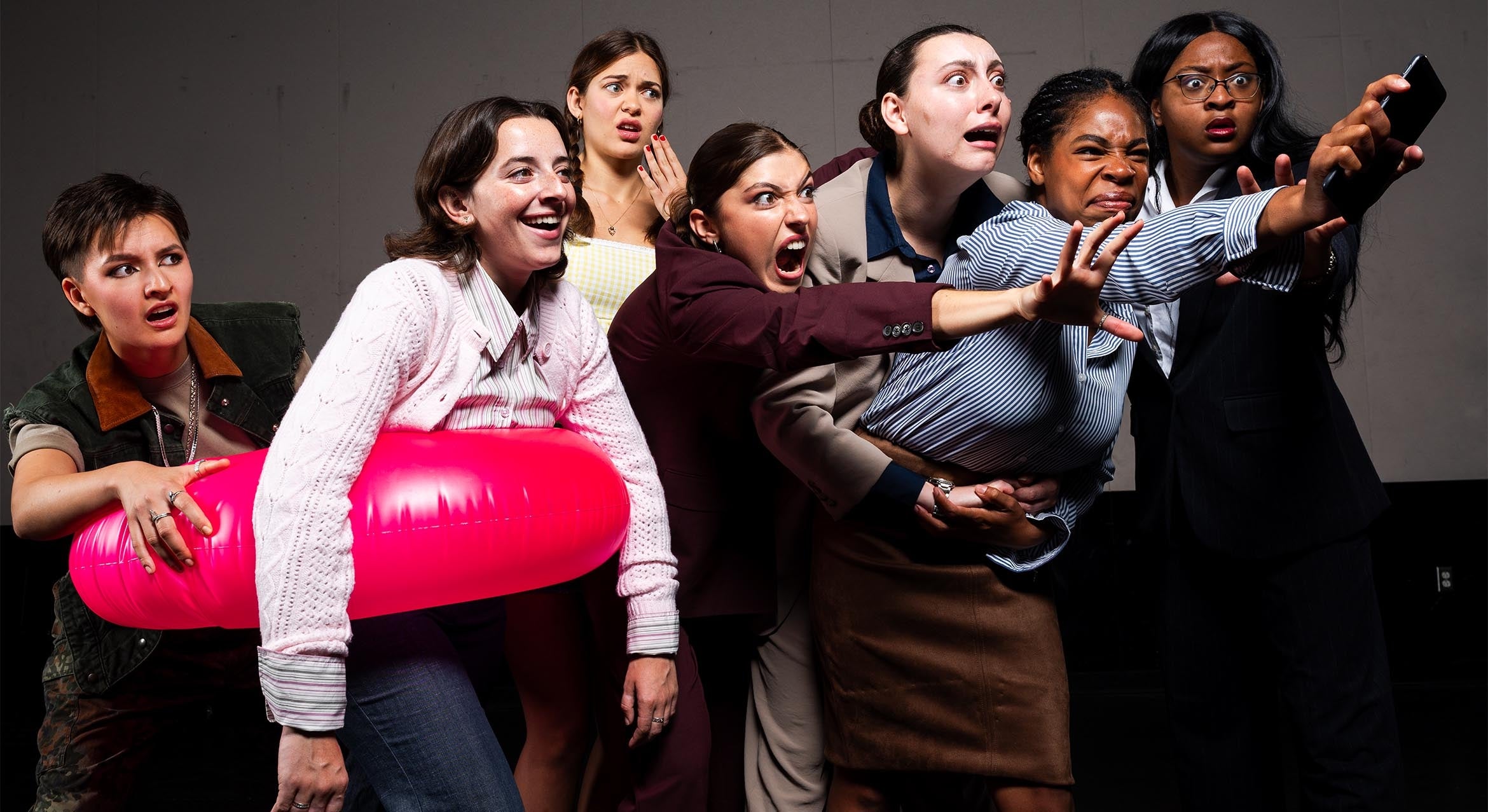Design and Construction
Tucked away in a back hallway of the theater complex at UC Santa Barbara lies a series of rooms filled with garments of all sorts. Veritable walk-in closets, they are, offering a glimpse of fashion through the ages — Victorian dresses, antebellum hoop skirts and polyester leisure suits, complete with accessories, undergarments and shoes.
Outfitting onstage talent since the 1960s, the UC Santa Barbara costume shop helps student performers embody their characters through dress. It’s an important task, one that is overseen by Ann Bruice, a professional costume designer and continuing lecturer in design in the Department of Theater and Dance, with assistance from Denise Umland, costume shop supervisor. The shop turns out more than 300 costumes each year, many of them custom built by Lillian Hannahs, the shop’s cutter and draper.
Because the shop has thousands of individual pieces in storage (called “stock”), the work of designing costumes for a show often involves customizing or augmenting existing items, all while balancing the demands of budget, speed and sturdy construction. “The goal is that the actor isn’t thinking about the clothes at all,” explained Umland. “If they’re doing a quick change, they shouldn’t have to worry about being too delicate with any costume.”
Though the amount of work required to dress an entire cast in multiple cohesive looks can be grueling, the finished products are testaments to creativity and craft. More than mere clothing, they have a transformative quality, enabling actors and dancers to fully disappear into their roles. Said Bruice: “Our job is to help illuminate the story and the characters, and bring some pathos to the work.”
From Sketch to Reality
Bruice, who has designed costumes for national regional theater productions, as well as for television, begins her process by reading the script, twice. Her first read is to get a sense of the overall story; the second is to highlight any specific directions related to how characters look, and Bruice takes notes about the time period. The amount of information provided in the original text varies widely.
Bruice contends that costumes are critical in indicating the setting of a play. “More and more, because scenic elements are becoming more abstract, costumes tell us where we are in time and place, which is really important,” she said. “They help with the arc of a story and tell us about a character — where they start and where they end.” In order to properly set the scene, she does what she describes as “copious amounts of research,” and compiles large notebook pages full of images (pulled from books and the internet) that inspire each character’s overall look.
For main characters’ costumes, she creates intricate watercolor renderings, often attaching fabric swatches. From there, the costume is made, ordered or assembled from a combination of existing elements and added trimmings or adornments. Bruice notes that in past decades, many of the costumes for each show were created from scratch, but shrinking budgets — and the rising cost of clothing and fabric — have forced costumers to make use of ready-to-wear pieces.
Still, something purchased from a store or online often requires customization: hand-dyeing, trim sewn on, buttons switched out or embellishments attached. Bruice does a lot of the craft work herself, but leaves some of it to her students, who are an integral part of the costume construction process at UC Santa Barbara.
Student Helpers
Two types of students spend hours of their time in the costume shop: those who are taking a practicum to fulfill a requirement, and those who aspire to become professional costume designers.
The former are composed of theater and dance majors who are required to take classes in behind-the-scenes production in order to complete their degrees. Many of them have never even threaded a needle, so Hannahs and Umland start with the basics, teaching them different stitches and simple sewing techniques. These students help attach buttons, snaps and labels onto each garment.
Umland believes the work imparts a greater lesson about the value of craftsmanship. “I think the practicum teaches them how much effort goes into sewing a label in or a snap on,” she said. “They finally realize how much time and effort goes into costumes. Then, when they’re in a production, they are more respectful of the costumes and the wardrobe crew. They treat the clothes better.”
Undergraduate students who are more serious about costume design have unique opportunities to garner real work experience, and to watch as their ideas and sketches become actual costumes. Twice a year, Bruice co-teaches a class that brings together student choreographers, lighting designers and costume designers — all of them advanced in their training — to collaborate on a dance concert. She mentors and meets with the student designers as they conceive ideas, sketch and color them, and sew as many of the costume elements as they can. She oversees fittings and alterations as well.
“Often I’ll have students who, especially if they figure out they like design early, have a lot of opportunities to have their designs produced,” Bruice said, adding that this work experience helps students when applying to graduate programs. “Not many undergraduates have that opportunity, especially if there is an MFA program at their school (in which case design responsibilities would fall to the more advanced students). We really rely on all of our students to design and assist with everything.”
Sydney Tollefson, a senior theater student pursuing a bachelor of arts degree with a design concentration, says she values the opportunities she has had to design costumes from scratch, and what she has gained from the experience. “I’ve learned the importance of body type and how designs look a lot different when they’re on a person,” she said, adding, “I like how small this department is, so you have more of a chance to grow as a designer.”
Dressing the Whole Character
In addition to providing visible articles of clothing, the UC Santa Barbara costume shop must dress performers fully, from the underclothes to outerwear, including things an audience member might not notice. For that reason, the shop has large cabinets filled with leotards, undergarments, every length of glove and hats —so many hats.
This meticulous approach helps the actors become their characters. “I feel like costume is important for any type of character you’re playing, but especially if you’re playing another gender or age. It changes your physicality,” said Leila Sadr, a senior bachelor of fine arts acting major.
“Once the costume is finished and it’s all on, you feel like the character,” echoed Michelle Hester, a student actor and theater major who recently tackled the challenge of playing a 13-year-old boy in 1963.
Bruice oversees the accuracy of each garment, down to making sure the buttons on a given jacket are the correct style. While the careful attention to detail means longer hours in the shop, she believes fully in the integrity of good design. “I just can’t do mediocre,” she said.
Strike and Reset
Because UC Santa Barbara’s annual production schedule includes two dance concerts and three or four plays, Bruice and Umland are well-versed in putting one set of costumes in storage and beginning work on an entirely new era or style — all in the span of a couple months. And they don’t mind at all. “I like that it’s always changing,” said Umland. “Every six weeks, it’s something new — a new time period, new fabrics. If you’re not really into the 1940s, in six weeks you’ll be doing a dance production.”
Bruice says that, despite the quick turnaround, she can always find a way to connect with her work. “Even if it’s a play that I’m not enthused about, I always find a way in through the characters,” she explained. “Even if I don’t love the play, I will find characters that I love and then I start to care about what I put on them.”
The ephemeral nature of live performance also helps to invigorate those tasked with transporting an audience to a different period through dress. Bruice, who has been working in theater for more than 35 years, says the process is still exciting for her. Each production brings something new. “The way you’re doing it, with the team of people you’re working with, has never been done before and will never be done again,” she said. “In that sense, there is always a freshness.”



